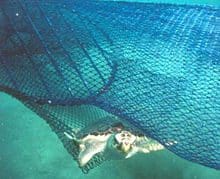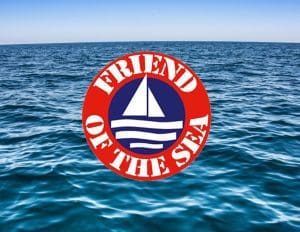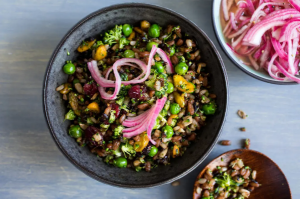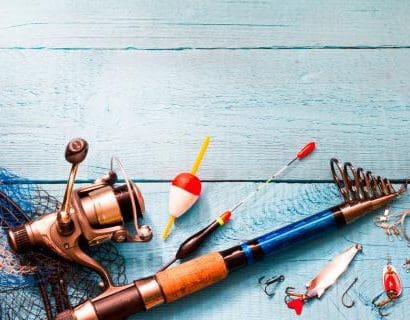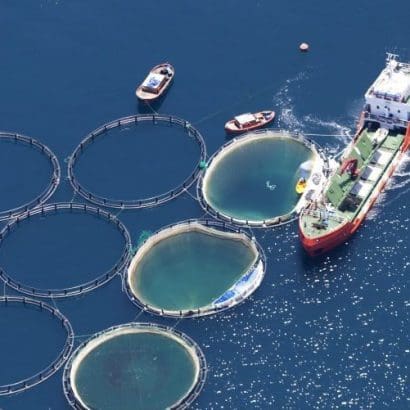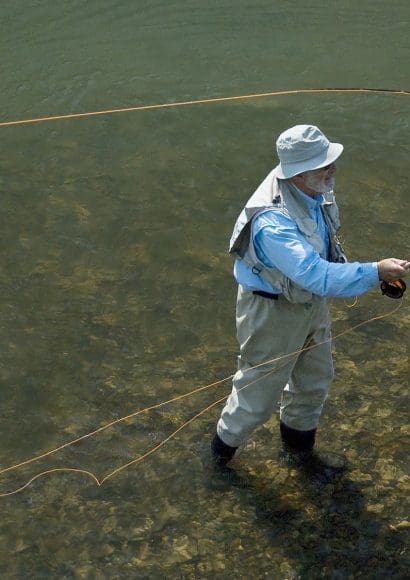
Picture this: a delicious seafood dish served at your favorite restaurant or prepared in your kitchen, tantalizing your taste buds with the flavors of the sea. But have you ever wondered where that fish or seafood on your plate came from? How it was caught or harvested? And whether your choice as a consumer makes a difference in the health of our oceans?
In our article, “Sustainable Fishing and Responsible Consumption: From the Sea to Your Table,” we’ll explore these questions and more, in simple terms anyone can grasp. We’ll delve into the world of sustainable fishing and how your choices as a seafood lover can play a vital role in preserving our oceans, supporting local communities, and ensuring a future where seafood remains a delectable part of our diet.
Contents
- Can Fishing Be Done in a Sustainable Way? 🐟
- Exploring Sustainable Fishing Techniques.🐟
- Decoding Sustainable Fishing.🐟
- Unlocking the Rewards.🐟
- Navigating the Seas of Sustainable Choices.🐟
- 1. Know Your Labels: Certifications are Key
- 2. Seasonal Sensibility: Embrace the Bounty of the Seasons
- 3. Diversify Your Choices: Explore Lesser-Known Species
- 4. Ask Questions: Engage with Your Fishmonger or Waitstaff
- 5. Be Mindful of Preparation Methods.
- 6. Seafood Apps: Harness the Power of Technology
- 7. Advocate for Change.
- Making Informed Choices: The Key to Responsible Seafood Consumption
- Success Stories in Sustainable Fishing.🐟
- 1. The Sustainable Fisheries Partnership (SFP).
- 2. New Zealand’s Quota Management System.
- 3. The Blue Marine Foundation: Restoring Ocean Health
- 4. The Alaska Salmon Fishery: A Model of Sustainability
- 5. Fishery Improvement Projects (FIPs).
- 6. Success Stories in Small-Scale Fisheries: From Palau to Senegal
- Changing the Narrative: Sustainable Fishing is Possible
Can Fishing Be Done in a Sustainable Way? 🐟
When we savor the ocean’s bounty on our plates, we rarely pause to ponder the journey that brings that seafood to our tables. Yet, the sustainability of this journey is a question that looms large in the world of fisheries and environmental conservation. Can fishing be done in a sustainable way, or is it just a myth? Let’s dive into this important discussion as we explore the pressing need for sustainable fishing.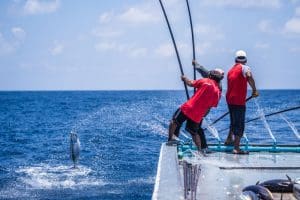
The Perils of Overexploitation:
For generations, the world’s oceans have generously provided us with an abundance of fish and seafood. However, as our appetite for seafood has grown, so has the pressure on marine ecosystems. Overfishing, a term that strikes fear into the hearts of marine biologists and conservationists alike, is at the heart of this issue.
Consequences of Unsustainable Fishing.
- Ecosystem Disruption: In our oceans, every species plays a vital role in maintaining the health and balance of the ecosystem. When one species is overfished, it can lead to an ecological imbalance. For instance, the decline of apex predators like sharks can trigger a population explosion of their prey, disrupting the entire food chain.
- Biodiversity Loss: Unsustainable fishing practices often target specific species, leading to the decline or even extinction of some fish and marine creatures. This loss of biodiversity not only threatens the survival of individual species but weakens the resilience of the entire ecosystem.
- Economic Impact: Fishing is not just about catching fish; it’s also about livelihoods. Many coastal communities around the world depend on fishing for their income and sustenance. When fish stocks collapse due to overfishing, it jeopardizes the economic stability of these communities.
- Food Security: Seafood is a crucial source of protein for billions of people worldwide. Overfishing jeopardizes this food source, particularly for vulnerable populations who rely heavily on fish as their primary protein.
Exploring Sustainable Fishing Techniques.🐟
As we delve deeper into the realm of sustainable fishing, the underwater world reveals secrets and strategies that help us understand the true essence of fishing sustainability. In this section, we will uncover the techniques that make it possible to harmonize our fishing practices with the environment, addressing questions like, “How does sustainable fishing help the environment?” and “Are fisheries sustainable?”
1. Selective Fishing: The Precision of Sustainable Harvesting
Imagine fishing as a surgeon’s delicate hand, precisely selecting only what’s needed while leaving the rest untouched. This is the essence of selective fishing, a key technique in sustainable fishing.
2. Line Fishing: A Gentle Tug on Nature’s Thread
Line fishing, also known as angling, is another sustainable fishing technique that mirrors the art of catch-and-release. Imagine fishing as a dialogue between humans and fish, where the latter has a chance to return to its underwater world.
Practices that Minimize Environmental Impact
Now, let’s dive into practical examples that showcase how sustainable fishing techniques reduce incidental catch and minimize harm to the marine environment:
- Turtle Excluder Devices (TEDs): TEDs are ingenious contraptions placed in fishing nets to allow sea turtles and other large marine creatures to escape while retaining the targeted catch. This innovation prevents accidental entanglements and potential harm to these vulnerable species.

- Bird-Friendly Hooks: In certain regions, fisheries have adopted bird-friendly hooks that deter seabirds from diving for bait. These hooks feature a unique design that reduces the risk of seabird bycatch during fishing operations.
- Closed Areas and Time Restrictions: Some fisheries implement temporary closures or restrictions in specific areas or during certain times to protect vulnerable marine habitats or breeding grounds. This approach ensures that fishing activities align with the natural rhythms of marine life.
Decoding Sustainable Fishing.🐟
In the vast world of seafood, where marine life meets our dinner plates, understanding what defines sustainable fishing can be as complex as navigating the ocean’s currents. In this section, we’ll embark on an enlightening journey through the realm of labels and certifications, deciphering the mysteries behind these symbols that guide us towards responsible choices.
Defining Sustainable Fishing: A Quest for Harmony
To define sustainable fishing is to seek a harmonious equilibrium between the pursuit of marine delicacies and the preservation of ocean ecosystems. It’s the art of reaping the ocean’s bounty while ensuring its perpetual abundance.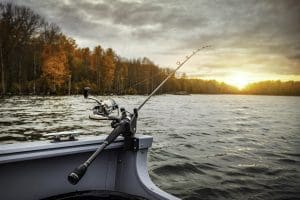
Labels and Certifications: Your Compass in the Seafood Aisle
In the modern marketplace, where an array of seafood options beckons, labels and certifications serve as your trusted navigational tools. These symbols offer assurance that the fish or seafood you’re eyeing has been caught or farmed in a responsible, eco-friendly manner.
MSC (Marine Stewardship Council):
This globally recognized certification assures consumers that the fish they’re buying has been sourced from fisheries that meet strict sustainability standards. Look for the distinctive blue MSC label on seafood products.
ASC (Aquaculture Stewardship Council):
When you see the ASC label, you’re gazing upon products sourced from responsible aquaculture practices. It signifies that the fish or seafood has been farmed in a way that minimizes environmental impact.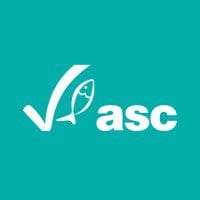
Friend of the Sea:
A label representing not only sustainable fishing practices but also fair labor conditions. It covers both wild-caught and farmed seafood and often boasts a range of certifications for a variety of products.
Organic Certification:
While commonly associated with land-based agriculture, organic certification is also applicable to aquaculture. It signifies that the seafood has been produced without synthetic chemicals or antibiotics.
How to Spot Responsible Seafood in the Market
Now that we’ve unveiled these curiosities of the seafood world, the question remains: how can consumers identify responsible seafood products in the market?
- Check for Labels: Look for the labels mentioned above on the packaging. These labels are a reliable indicator that the product aligns with sustainable fishing practices.
- Ask Questions: Don’t hesitate to ask your fishmonger or server about the source of the seafood. Inquire about the fishing or farming methods employed.
- Consult Sustainable Seafood Guides: Several organizations and websites provide up-to-date guides and apps to help consumers make informed choices. These resources offer insights into which seafood is in season and sustainably sourced.
Unlocking the Rewards.🐟
In the world of dining choices, opting for sustainable seafood isn’t just a trend; it’s a commitment with far-reaching implications. As we delve into the question of “why is sustainable fishing important?” and explore the advantages of choosing sustainable seafood, we’ll discover the profound impact this choice can have on our health, the environment, and the livelihoods of fishing communities.
Why is Sustainable Fishing Important?
At its core, sustainable fishing represents a delicate dance between human appetite and the ocean’s capacity to provide. But why is it so crucial? Let’s explore the multifaceted reasons.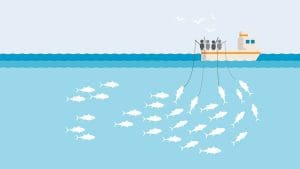
1. Environmental Guardianship: Preserving Ocean Ecosystems
- Healthier Oceans: Sustainable fishing helps maintain the health and balance of marine ecosystems by preventing overfishing and minimizing bycatch. This, in turn, sustains the diversity of aquatic life beneath the waves.
- Protecting Habitats: Responsible fishing practices reduce the impact on delicate marine habitats, such as coral reefs and seagrass beds, safeguarding these essential ecosystems for future generations.
2. Consumer Benefits: Quality and Peace of Mind
- Better Quality Seafood: Sustainable fishing often leads to superior seafood quality. Fish caught sustainably tend to be fresher, tastier, and free from harmful contaminants.
- Peace of Mind: When you choose certified sustainable seafood, you’re making a conscious decision to support ethical practices. It’s a choice that aligns with your values and contributes to a healthier planet.

3. Economic Sustainability: Empowering Fishing Communities
- Stable Livelihoods: Sustainable fishing practices ensure that fish stocks remain viable, securing the livelihoods of fishing communities. When fishermen can rely on a consistent catch, their economic well-being is fortified.
- Fair Labor Practices: Many sustainable fishing initiatives also emphasize fair labor conditions, protecting the rights and dignity of those who toil in the fishing industry.
4. Positive Health Impact: Nutritional Benefits
- Rich in Omega-3 Fatty Acids: Seafood is a powerhouse of essential nutrients, particularly omega-3 fatty acids. Consuming sustainably caught fish contributes to a heart-healthy diet.
- Low in Contaminants: Sustainable seafood is less likely to contain harmful contaminants like mercury, making it a safer and more nutritious choice.
The Myth of Sustainable Fishing: Dispelled
While some may question whether sustainable fishing is possible, the reality is that it’s not a myth; it’s an attainable goal that benefits us all. By selecting responsibly sourced seafood, we collectively support the delicate balance of our oceans, enhance our own well-being, and bolster the prosperity of fishing communities worldwide.
In a world where every purchase has the potential to be a statement, choosing sustainable seafood isn’t just a choice; it’s a powerful action. In this section, we’ll dive into practical tips for consumers who are eager to make a positive impact through their seafood choices. Let’s explore how to answer questions like “how does sustainable fishing help the environment?” and “how sustainable is aquaculture?”
1. Know Your Labels: Certifications are Key
- MSC, ASC, and More: Familiarize yourself with sustainable seafood certifications like the Marine Stewardship Council (MSC) and the Aquaculture Stewardship Council (ASC). Look for these labels when shopping for seafood.
- Friend of the Sea: Keep an eye out for the Friend of the Sea label, which covers a range of sustainable seafood products, often extending beyond just fish to include shrimp, mussels, and more.

2. Seasonal Sensibility: Embrace the Bounty of the Seasons
- Stay Informed: Learn which seafood species are in season in your region. Seasonal seafood is often more abundant and sustainable due to natural reproductive cycles.
3. Diversify Your Choices: Explore Lesser-Known Species
- Try Something New: Don’t limit yourself to the usual suspects. Exploring lesser-known seafood varieties can help reduce pressure on popular but overfished species.
4. Ask Questions: Engage with Your Fishmonger or Waitstaff
- Inquire About Sources: When dining out or shopping at a seafood market, don’t hesitate to ask about the source of the seafood. Responsible businesses should be able to provide this information.
5. Be Mindful of Preparation Methods.
- Choose Sustainable Recipes: Explore recipes that focus on sustainable seafood choices. This not only broadens your culinary horizons but also supports responsible consumption.

6. Seafood Apps: Harness the Power of Technology
- Use Seafood Apps: There are mobile apps and websites dedicated to helping consumers make informed seafood choices. These tools provide up-to-date information on sustainable options.
7. Advocate for Change.
- Spread the Word: Share your knowledge and passion for sustainable seafood with friends and family. The more people who understand its importance, the greater the impact.
Making Informed Choices: The Key to Responsible Seafood Consumption
As consumers, we hold the power to drive positive change through our choices. By following these practical tips, you become an active participant in the movement for sustainable fishing and aquaculture. You not only answer the question of “how does sustainable fishing help the environment?” but also embody the solution.
Success Stories in Sustainable Fishing.🐟
In the realm of sustainable fishing, where the balance between human needs and environmental preservation is paramount, success stories shine like beacons of hope. In this section, we’ll delve into inspiring examples of initiatives and projects from around the world that prove the concept of sustainable fishing is not only possible but also a powerful force for positive change.
1. The Sustainable Fisheries Partnership (SFP).
- Imagine a world where seafood supply chains are transparent, responsible, and sustainable. The Sustainable Fisheries Partnership (SFP) is working tirelessly to turn this vision into reality. This organization collaborates with businesses, governments, and NGOs to drive improvements in fishing and aquaculture practices.

2. New Zealand’s Quota Management System.
- New Zealand’s Quota Management System (QMS) is a shining example of how sustainable fishing practices can replenish fish stocks. By setting quotas that align with scientific assessments of fish populations, New Zealand ensures that fishing remains within sustainable limits.
3. The Blue Marine Foundation: Restoring Ocean Health
- The Blue Marine Foundation, a UK-based organization, is devoted to the creation of marine reserves that protect vulnerable species and habitats. Their work demonstrates how marine conservation can go hand in hand with sustainable fishing, benefiting both ecosystems and coastal communities.

4. The Alaska Salmon Fishery: A Model of Sustainability
- The Alaska Salmon Fishery has long been hailed as a model of sustainability. Its rigorous management practices, including strict fishing quotas and protections for spawning salmon, have resulted in thriving salmon populations, offering a testament to what’s possible when sustainable fishing is a priority.
5. Fishery Improvement Projects (FIPs).
- Fishery Improvement Projects (FIPs) are collaborative endeavors involving fisheries, retailers, and conservation organizations. These projects aim to bring fisheries up to sustainability standards by implementing better practices and reducing environmental impact.
6. Success Stories in Small-Scale Fisheries: From Palau to Senegal
- In places like Palau and Senegal, community-driven initiatives have demonstrated how small-scale fisheries can embrace sustainable practices. These success stories highlight the positive impact on local economies and the preservation of marine resources.
Changing the Narrative: Sustainable Fishing is Possible
These success stories showcase the tangible impact of sustainable fishing on both marine ecosystems and the communities that rely on them. They answer the question of “how does sustainable fishing help the environment” with real-world examples of thriving oceans and thriving economies.

